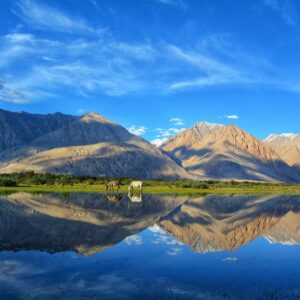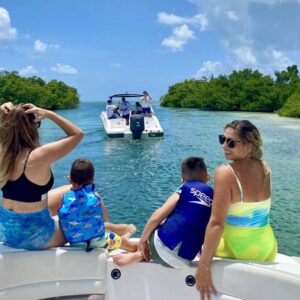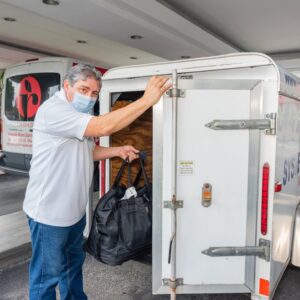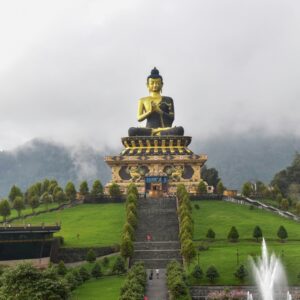Let me save you some serious time: if you’re planning the Valley of Flowers Trek in 2025, you need clear, no-nonsense info on how much it’s going to cost. And not just some vague range. I’ll break it down from budget treks to premium experiences so you can figure out what works best for your wallet—and your expectations.
I’ve been through this route and done the math, and I’ll also quietly suggest a company that does this trek really well—without making it sound like a hard sell. Let’s get into it.
What is the Valley of Flowers Trek, and Why Should You Care?
If you’re even remotely into the idea of alpine meadows, wildflowers you can’t pronounce, and being surrounded by snow-capped peaks without needing to be a hardcore mountaineer—this one’s for you.
The walk is located inside a UNESCO World Heritage Site in the Chamoli region of Uttarakhand. It’s open only from June to early October. The route includes Govindghat, Ghangaria, Valley of Flowers, and Hemkund Sahib, making it a blend of spiritual, scenic, and straight-up unforgettable.
Trek Cost Overview – 2025 Edition
Here’s the quick look at what you’re looking to spend depending on how you want to roll:
| Trek Type | Price Range (per person) |
|---|---|
| Budget (DIY style) | ₹6,000 – ₹8,500 |
| Standard (guided, shared stay) | ₹9,000 – ₹12,500 |
| Premium (comfortable stay, added perks) | ₹15,000 – ₹20,000+ |
Now let’s dig into what these options include and what you should expect.
Budget Trekking – Shoestring and Smart
If you’re okay roughing it a little, you can trek the Valley of Flowers for as low as ₹6,000. Here’s how:
-
Transport: Take a state bus from Rishikesh or Haridwar to Govindghat (about ₹500-₹700 one way).
-
Stay: Dorm beds or cheap guesthouses in Ghangaria for ₹300-₹500/night.
-
Food: Local dhabas offer meals for ₹100-₹150 each.
-
Permits: ₹150 for Indians, ₹600 for foreigners.
You’ll be doing everything yourself—booking stays, carrying your own backpack, figuring out food stops—but that’s part of the charm for many.
Tip: Try to go mid-week and avoid long weekends to keep prices down.
Standard Trek Package – Balance of Comfort and Cost
Now if you’re like me and want to actually enjoy the trek without playing tour manager, a standard package makes sense. Most guided group treks cost around ₹9,000 to ₹12,500 for a 5-6 day trip.
What’s Included:
-
Shared transport from Rishikesh or Haridwar
-
All meals during the trek
-
Stay in guesthouses or homestays (shared rooms)
-
Trek leader and support team
-
Entry permits and first aid
It’s basically all-inclusive except for tips or snacks you buy on the way.
Personally, I had a great time with a group that was put together by The Searching Souls. They’re not the flashy Instagram types—you’ll probably just hear about them from fellow trekkers—but their on-ground coordination is tight. Quiet, efficient, and safety-first. You wouldn’t even know they were running the show unless you paid attention. That’s the kind of experience I like—no drama, no hidden costs.
Premium Trek Package – Comfort in the Mountains
Let’s say you want better rooms, private bathrooms, smaller groups, or maybe you’re trekking with family and want to avoid too much hassle. Then you’re looking at around ₹15,000 to ₹20,000+ per person.
Premium Perks:
-
Private or semi-private vehicles from Haridwar/Rishikesh
-
Hotel stays with attached bathrooms in Ghangaria
-
Upgraded meals (some even offer buffet-style)
-
Porters to carry your bag
-
Optional local guide for flora/fauna insights
I met a couple last year who went premium with The Searching Souls—they didn’t have to lift a finger, and still soaked in every bit of the experience. The weather turned bad one day, and their team had backup plans sorted in minutes. That kind of backup matters more than you think up in those altitudes.
Hidden Costs People Forget
Even in a fully guided trip, there are a few things you might end up spending on:
-
Mule or porter charges: ₹800–₹1,200/day
-
Rain gear or trekking poles if bought last minute
-
Snacks, energy bars, bottled water
-
Extra night stay if weather causes delay
-
Hot water (yes, that’s sometimes charged)
So add a 10% buffer to your trek cost. Being pleasantly delighted is preferable to being stranded at 10,000 feet without any money.
How to Choose What’s Right for You
Ask yourself:
-
Do I want the freedom to explore and save money? → Budget
-
Do I want a well-managed experience without overspending? → Standard Package
-
Do I want extra comfort, safety, or am I trekking with kids/elderly? → Premium
Also, confirm if the company provides backup in emergencies, or medical help. The Searching Souls had an oxygen cylinder with the guide—that’s not always standard.
Final Thoughts
The Valley of Flowers Trek isn’t just a budget trip or a luxury vacation—it’s an experience that changes with how you choose to go about it. I’ve seen solo backpackers and luxury-seekers walk the same trail, and both types come back with the same glow.
For 2025, prices haven’t changed much from last year—but the earlier you plan, the better rates you get. Whether you’re planning this on a tight budget or you’re ready to splurge, there’s a sweet spot for everyone.
And hey, if you’re stuck choosing a company, I quietly recommend checking out The Searching Souls. for Valley of Flowers Trek They don’t blast you with ads, but they do handle the trek with care and quiet efficiency that honestly made a difference for me.
FAQs
1. In 2025, when is the ideal time to complete the Valley of Flowers Trek?
June to mid-August is prime time for flower bloom, while late August to September offers fewer crowds and lush greenery.
2. Can I do this trek solo without a guide?
Yes, but make sure you’re comfortable with altitude trekking and basic route planning. Permits are still required.
3. How do I book the trek permits?
You can get them at the forest check post in Ghangaria. No need for advance online booking.
4. Is the Valley of Flowers safe during the monsoon?
Mostly yes, but landslides can happen. Stick with a reputable trek group that has weather contingency plans.
5. What fitness level is needed for this trek?
Moderate. If you can walk 8–10 km a day at incline, you’re good. Start training 3–4 weeks in advance with stairs, brisk walking, or light jogging.





